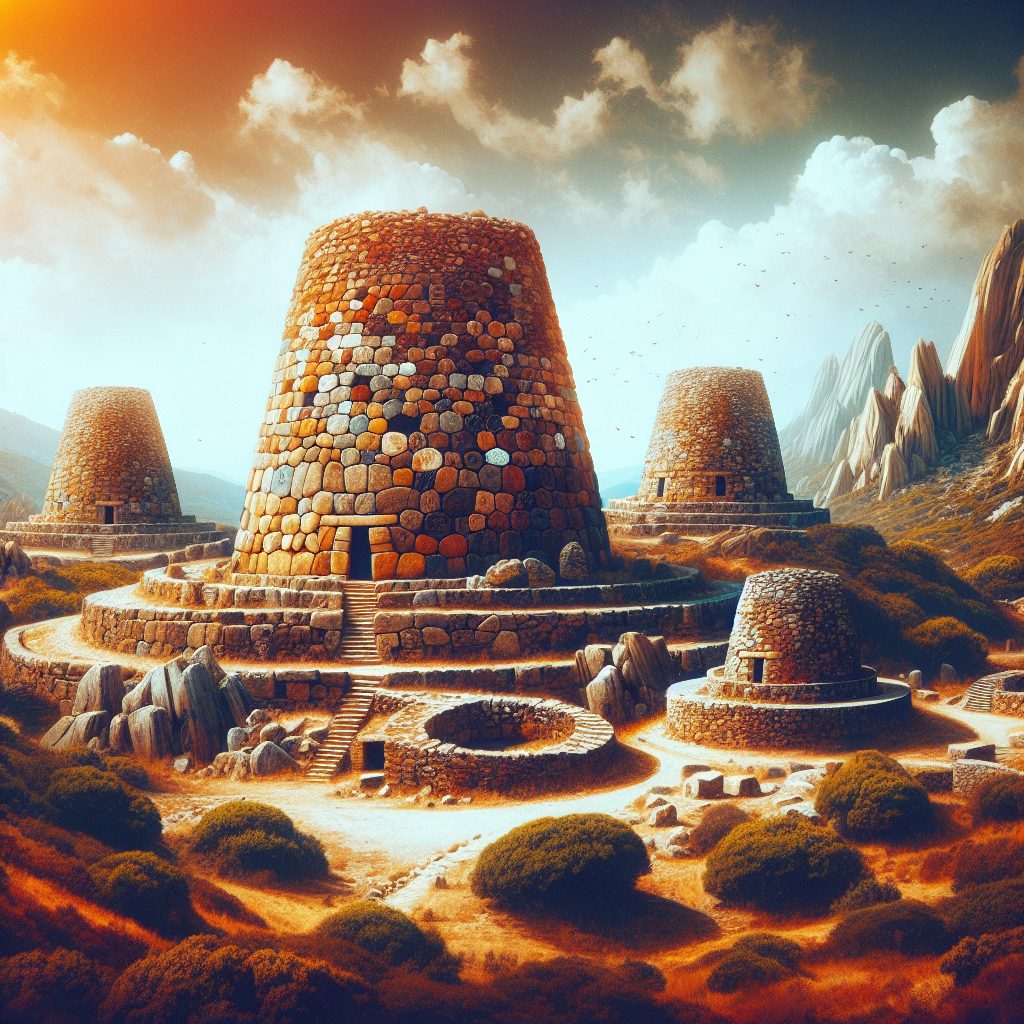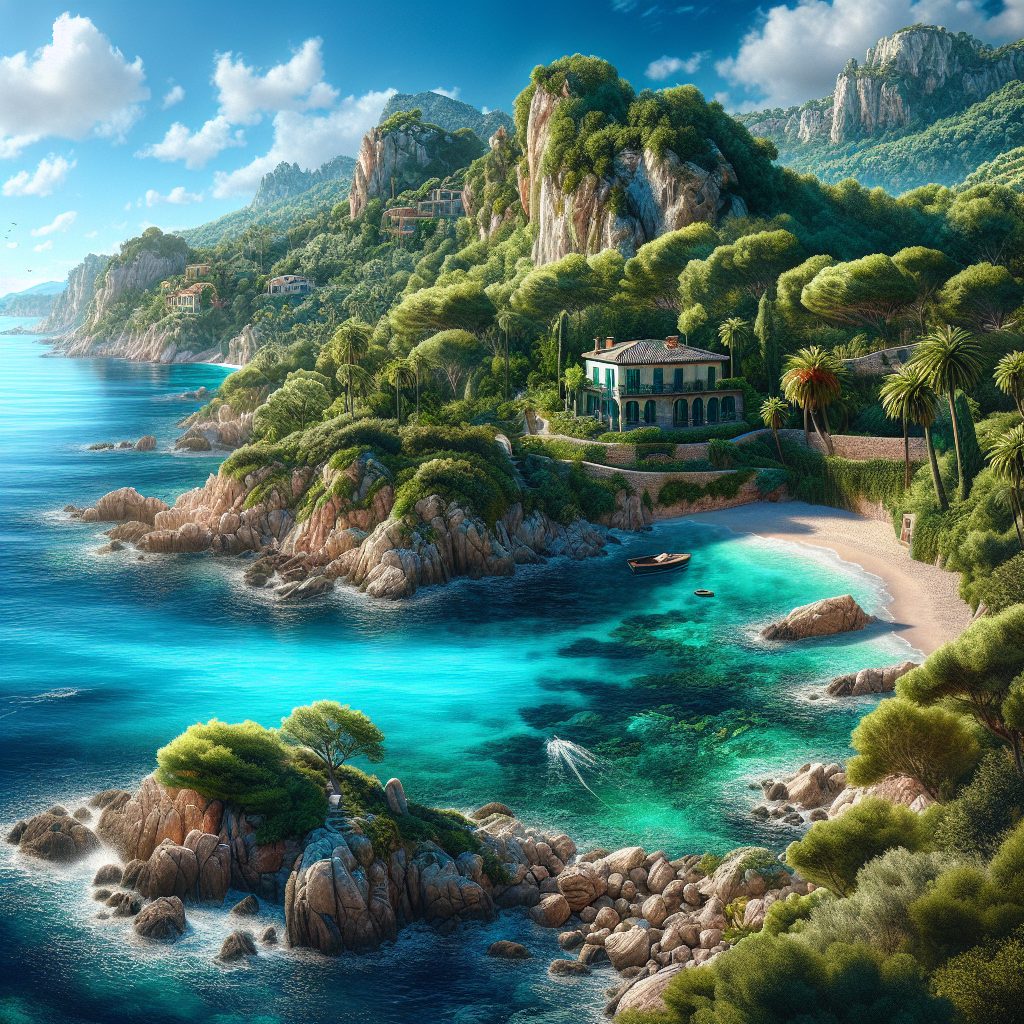Nuraghe: Legacy of Ancient Sardinia is a fascinating topic that uncovers the rich history and unique cultural heritage of the island of Sardinia. The term “Nuraghe” refers to ancient megalithic structures found throughout Sardinia, which served as fortresses, dwellings, and places of worship for the Nuragic civilization that thrived on the island from around 1800 to 900 BC. These remarkable structures, made of large stone blocks without the use of mortar, offer a glimpse into the advanced engineering techniques and social organization of the ancient Sardinians.
One of the most intriguing aspects of Nuraghe is their sheer number and variety. It is estimated that there are over 7,000 Nuragic sites scattered across Sardinia, giving insight into the vastness of this ancient civilization. Each Nuraghe is unique in its design and purpose, with some consisting of a single tower, while others comprise complex structures interconnected by passageways and chambers. These monumental structures not only highlight the architectural prowess of the Nuragic people but also speak to their advanced understanding of defense strategies and their ability to create cohesive communities.
Moving forward, this article will delve into the key takeaways of Nuraghe: Legacy of Ancient Sardinia. We will explore the significance of these structures in understanding the Nuragic civilization’s social and cultural aspects. Furthermore, we will examine the impact of Nuraghe on modern-day Sardinia, including their influence on local traditions and tourism. Join us on this captivating journey as we uncover the enduring legacy of Nuraghe and the ancient Sardinian civilization.
Key Takeaways
1. Nuraghe structures are ancient stone towers found exclusively in Sardinia, Italy, dating back to the Bronze Age, and are considered significant examples of prehistoric architecture.
2. These distinctive structures, often compared to beehives or beacons, were built by the Nuragic civilization between 1800 and 900 BC and served various purposes including defensive fortifications, dwellings, and places of worship.
3. The Nuragic civilization, partly shrouded in mystery due to limited historical records, played a significant role in trade and had a complex social structure. The intricate construction and impressive size of the nuraghe structures are a testament to their advanced engineering skills.
4. Over 7,000 nuraghe structures have been identified in Sardinia, ranging from simple single-tower nuraghes to complex multi-towered ones like the Nuraghe Santu Antine. These structures vary in size, with some towering up to 60 feet high.
5. Despite their cultural and historical significance, many nuraghes face challenges due to weathering, lack of maintenance, and looting. However, efforts are being made to preserve and promote these extraordinary structures, offering visitors a glimpse into Sardinia’s fascinating prehistoric past.
What is the Legacy of Ancient Sardinia’s Nuraghe?
The Historical Significance of Nuraghe
The Nuraghe is an ancient and unique type of tower-like structure in Sardinia, Italy. It holds immense historical importance and provides valuable insights into the civilization of ancient Sardinia.
The Architecture of Nuraghe
The Nuraghe structures are renowned for their impressive architecture. These megalithic towers are built using large stones without the use of mortar. Some Nuraghe towers can reach heights of up to 20 meters. The construction techniques and designs of these structures reflect the advanced engineering skills of the ancient Sardinians.
Purpose and Function
The purpose and function of Nuraghe have been subjects of study and debate among historians and archaeologists. Some theories suggest that these structures served as defensive fortifications, while others propose their role in religious ceremonies or as symbols of power and social hierarchy. The inner chambers of some Nuraghe contain evidence of residential spaces, suggesting they may have been used for habitation as well.
Artifacts and Discoveries
Excavations in and around Nuraghe have uncovered numerous artifacts, providing valuable insights into the daily life and culture of the ancient Sardinians. These artifacts include pottery, bronze objects, jewelry, and tools, showcasing the artistic and technological skills of the civilization.
The Nuragic Civilization
Nuraghe is closely associated with the Nuragic civilization, which flourished in Sardinia from the Bronze Age to the Iron Age. The Nuragic people were skilled metalworkers and seafarers, engaging in trade and establishing relationships with other Mediterranean cultures.
The Role of Nuraghe in Tourism
In modern times, Nuraghe has become a major attraction for tourists visiting Sardinia. The unique structures and their historical significance draw visitors from around the world, contributing to the economy of the region.
Preservation and Conservation Efforts
Preserving and conserving Nuraghe structures is essential to maintain their integrity and protect them from natural decay and human activities. Efforts are being made to ensure these ancient structures are safeguarded for future generations.
Nuraghe: A Window into the Past
The Nuraghe of Ancient Sardinia offers a fascinating glimpse into the lives of the Nuragic people. By studying these structures and the artifacts found within them, archaeologists and historians can piece together a more comprehensive understanding of the ancient past.
Guides for Exploring Nuraghe: Legacy of Ancient Sardinia
- When visiting Nuraghe sites, be prepared for uneven terrain and wear appropriate footwear for exploring these ancient structures.
- Bring a camera to capture the impressive architecture and scenic surroundings of the Nuraghe.
- Consider hiring a knowledgeable guide who can provide insights into the history and significance of the Nuraghe.
- Respect the sites by not littering, damaging, or removing any artifacts from the Nuraghe.
- Immerse yourself in the rich history and culture of Ancient Sardinia by visiting nearby museums and archaeological sites.
Frequently Asked Questions
What are nuraghe?
Nuraghe are ancient megalithic structures found on the island of Sardinia, Italy. They are unique to this region and were built by the Nuragic civilization during the Bronze Age.
How many nuraghe are there in Sardinia?
It is estimated that there are over 7,000 nuraghe scattered across Sardinia. These structures vary in size, shape, and complexity, with some being simple towers while others are elaborate fortresses.
What was the purpose of nuraghe?
The exact purpose of nuraghe is still debated among archaeologists. However, it is believed that they served as defensive structures, lookout towers, religious sites, and even dwellings for the Nuragic people.
How were nuraghe built?
Nuraghe were constructed using large blocks of stone without the use of mortar. The stones were carefully stacked on top of each other to create circular or conical structures. Some nuraghe also had additional structures attached to them.
What is the significance of nuraghe in Sardinian culture?
Nuraghe are of great cultural significance to the people of Sardinia. They represent the ancient roots and identity of the island’s inhabitants and are considered symbols of strength, resilience, and ingenuity.
Can you visit nuraghe in Sardinia?
Yes, many nuraghe sites in Sardinia are open to the public and can be visited. Some of the most famous and well-preserved nuraghe include Su Nuraxi di Barumini, Nuraghe Losa, and Nuraghe Santu Antine.
Are nuraghe recognized as UNESCO World Heritage sites?
Yes, several nuraghe complexes in Sardinia have been recognized as UNESCO World Heritage sites. These include Su Nuraxi di Barumini, which is one of the best-preserved and most impressive nuraghe.
Can you climb to the top of a nuraghe?
While it is not allowed to climb to the top of every nuraghe due to preservation concerns, some sites do offer the opportunity to climb and explore the structures. However, visitors must always follow the guidelines and instructions provided at the site.
What other archaeological sites are there in Sardinia?
Sardinia is home to numerous other archaeological sites apart from nuraghe. These include ancient tombs, rock carvings, Roman ruins, and Phoenician and Punic settlements. Some notable sites include the Tomb of the Giants, Tharros, and Nora.
Are nuraghe only found in Sardinia?
Yes, nuraghe are unique to Sardinia and are not found anywhere else in the world. They are one of the defining archaeological features of the island and its ancient civilization.
Final Thoughts on Nuraghe: Legacy of Ancient Sardinia
The nuraghe of Sardinia are a testament to the rich and fascinating history of the island. These impressive structures not only showcase the architectural skills of the Nuragic people but also offer a glimpse into their way of life and societal structures. Exploring the nuraghe sites in Sardinia is like stepping back in time and immersing oneself in the ancient culture that once flourished there.
Preserving and studying the nuraghe is of utmost importance as they hold valuable insights into the past. They are a source of pride for the people of Sardinia and continue to intrigue and captivate visitors from all around the world. The legacy of nuraghe serves as a reminder of the island’s rich cultural heritage and the need to safeguard it for future generations to appreciate and learn from.






